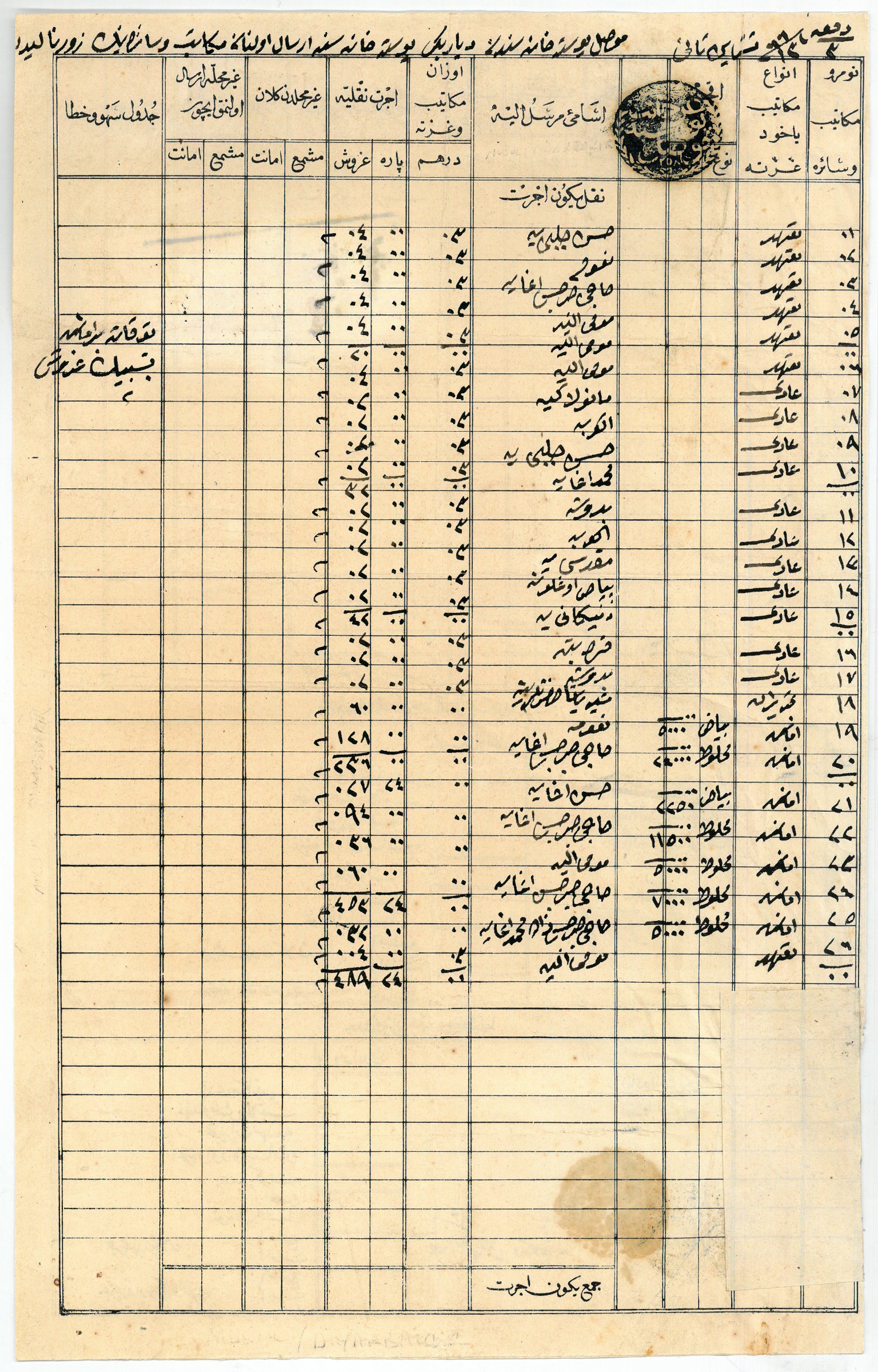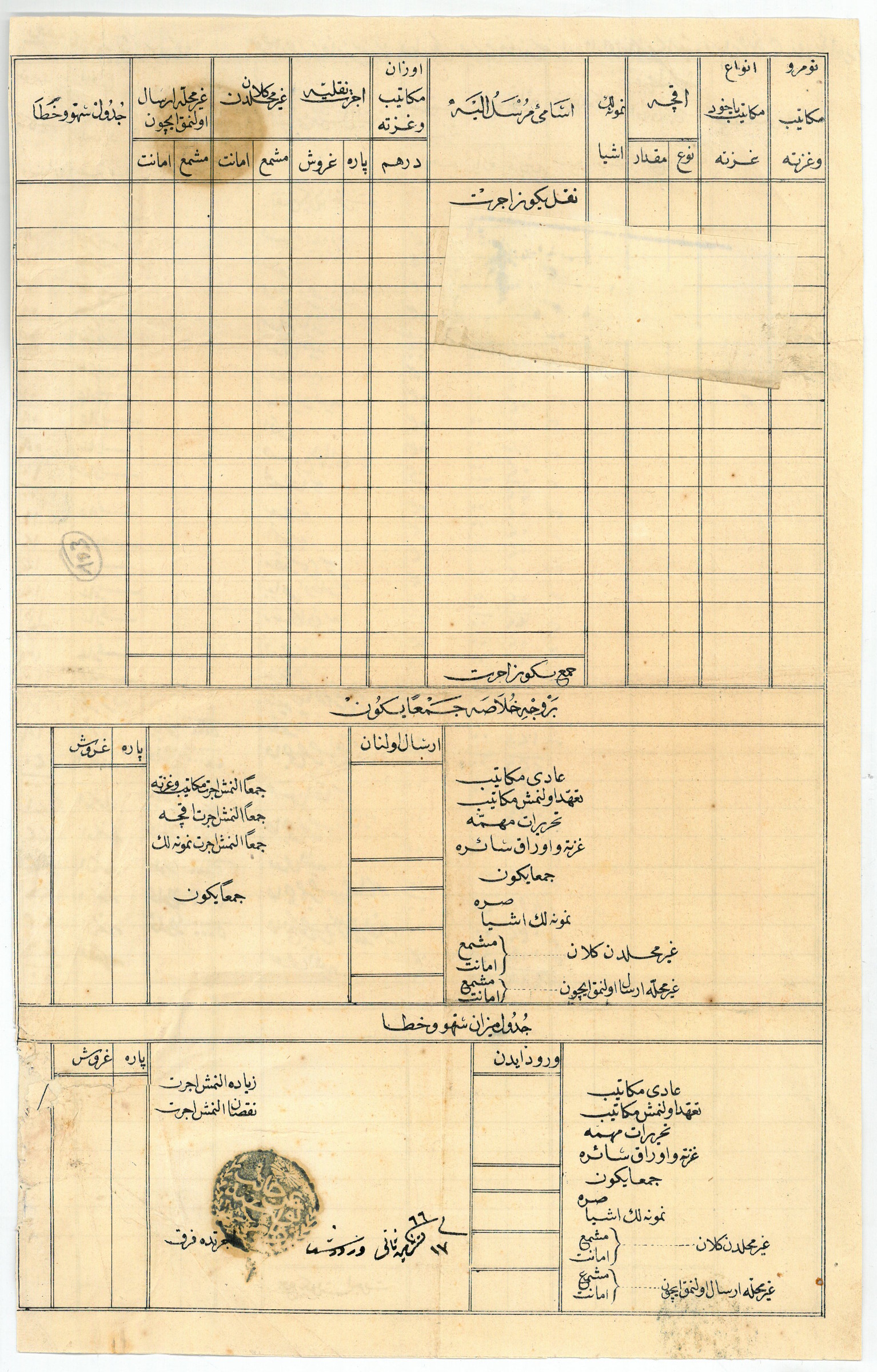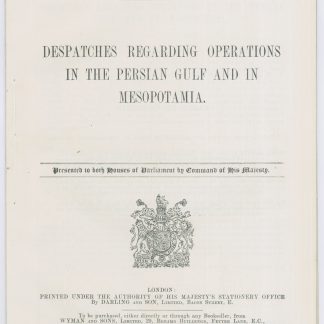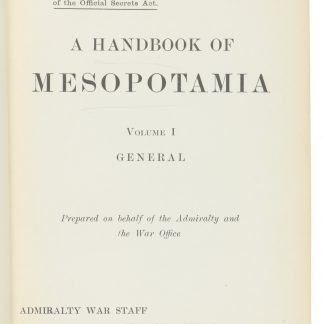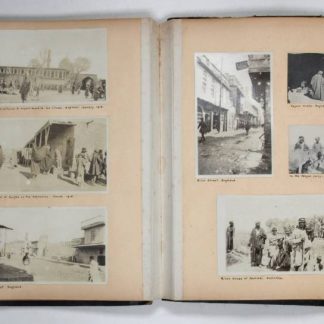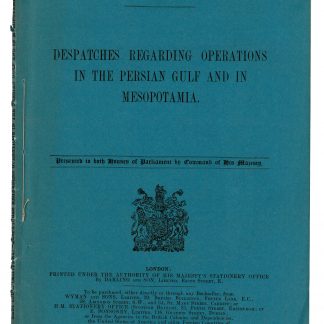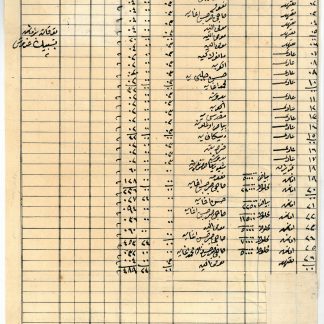Early Ottoman postal history
[List of postal items, sent from Mosul to Diyarbekir].
Folio (215 x 345 mm). 1 page. Ottoman Turkish document. Printed form, filled out in manuscript with black ink, with the post office seal of Mosul and Diyarbekir.
€ 1.250,00
An early official letter carrier list of the Ottoman postal service, recording letters sent from Mosul in present-day Iraq to Diyarbekir in South-Eastern Anatolia, bearing the black seal of Mosul, "an-Canibi posta-i Musul", at the top and the black seal of Diyarbekir, "an-Canibi posta-i Diyarbekir", at the end. It was sent from Mosul on 12 Tesrin-i Sani 66 (24 November 1850) and received by the Diyarbekir post office on 17 Tesrin-i Sani 66 (29 November 1850). The list covers 26 letters amounting to a total cost of 489 kurus 24 paras.
The establishment of the modern postal system in the Ottoman Empire dates to 1840. Prior to this, communication was provided through messengers called "tatars". Since the early 1800s, efforts were made to modernize the postal system and establish a European-style service within the scope of other modernization projects in the Ottoman Empire. After separate attempts in 1832 and 1834 failed, a "modern" postal system was finally established in 1840. Since the "tatar" messengers were absorbed into this postal system, it continued to be called the "Tatar Post".
The first postage stamp in the Ottoman Empire would not be issued until 23 years after the establishment of this "Posta Nezarethanesi": until 1863, letters were merely stamped with the seal of the respective post office. These seals were usually black or blue and labelled with the name of the city. This era is known as the prephilatelic era in Ottoman postal history.
Marks of folding and slight paper repairs; overall bright and clean.

